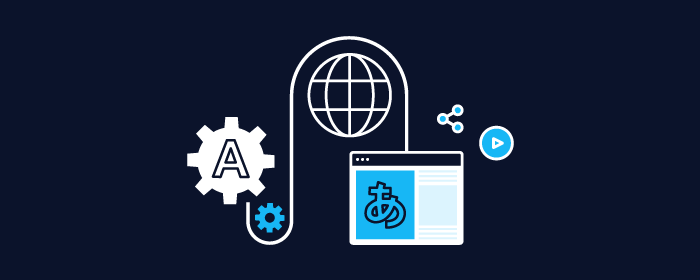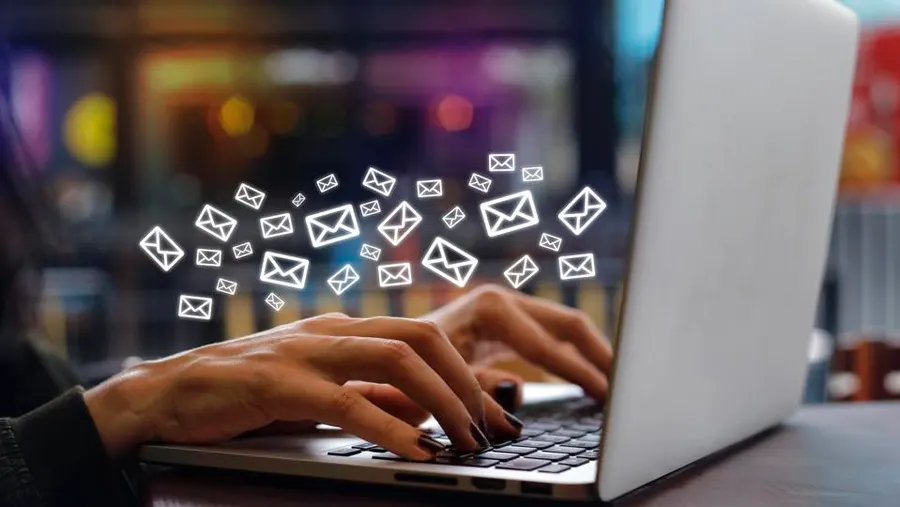Hello!
The rise of social media platforms like TikTok and Instagram has made it easy to forget about more traditional marketing methods like email. However, we don’t recommend giving up your email sequences and lead magnets for viral dance challenges and voiceovers just yet.
Why? As much as the world likes scrolling through endless memes and dog videos, email marketing is still one of the most powerful lead-generation tools.
With carefully crafted email campaigns, prospects who willingly opt into your messages can become your best source of revenue. But how do you build email marketing strategies to generate leads, why are they essential for lead nurturing, and how do you boost your conversions?
What Is Email Marketing Lead Generation?
 Email marketing is a medium that can be useful if you’re looking to capture leads and push them through your sales funnel. With email marketing lead generation, you capture potential customers’ interest and contact information through various channels, such as your website, landing pages, and social media pages.
Email marketing is a medium that can be useful if you’re looking to capture leads and push them through your sales funnel. With email marketing lead generation, you capture potential customers’ interest and contact information through various channels, such as your website, landing pages, and social media pages.
The goal is to turn strangers into warm prospects and warm prospects into paying customers — and yes, email marketing gets the job done. In 2023 alone, over half of marketing professionals reported double the improvement rate in return on investment (ROI) for their email marketing campaigns, according to Statista.
Email marketing campaigns often begin with an irresistible opt-in offer, such as a free download, subscription offer, or invitation to book a call. Email addresses are the most important data to collect, although some offers may require more details like names and phone numbers.
However, the simpler, the better — more complex forms might cause prospects to leave your site before submitting their information.
Why You Need an Email Lead-Generation Strategy
It’s not enough to send random emails here and there, hoping for the best. Put a lead-generation strategy behind your email efforts, and you’ll have focused campaigns with clear goals and key performance indicators to measure them.
 Here are some advantages of developing an email lead-generation strategy that fits your brand:
Here are some advantages of developing an email lead-generation strategy that fits your brand:
- Boosts sales revenue: Strategic email lead generation targets individuals who have already expressed interest in your brand by opting into your messaging. When you have permission to market to your audience, it increases the likelihood of converting them into customers.
- Enables a personalized approach: When you build your email campaigns to collect user data, such as demographics and behaviors, you can get highly targeted with your messages. You can also send different messages to various audience segments, further honing your approach.
- Builds trust and credibility: Consistent, relevant communications via email establish your brand as a trustworthy authority and thought leader.
- Is measurable and data-driven: Detailed analytics on deliverability, opens, click-throughs, conversions, and other metrics that help you fine-tune your emails and optimize your strategy over time.
Email Marketing Techniques to Boost Your Conversions
It’s time to get into the nitty-gritty of email marketing lead-generation strategies. Below are the top methods we recommend to attract your audience’s attention, convince prospects to submit their email addresses, and convert leads into loyal customers.
Identify Your Target Audience
Before you can target an audience, you need to identify your ideal customer. Once you understand your audience’s defining characteristics it is easier to personalize campaigns to their needs and interests.
 Consider the following questions to identify your target customers:
Consider the following questions to identify your target customers:
- What industry sector are you targeting?
- Who are the decision-makers you need to target — C-suite executives? Project managers? Salespeople? Get granular so you can refine your messaging accordingly.
- What do I know about this target audience so far — demographics, buying behaviors, pain points, revenue, and other factors? Conduct market research to get answers and create buyer personas for the people you want to target.
- What challenges are you solving for your target audience?
- What are the channels this customer typically uses? For instance, if your audience uses LinkedIn, you can promote your offers and collect leads through targeted advertising and InMail messages.
Create Gated Content
 Offering ebooks, whitepapers, free guides, and other free content in exchange for email addresses is a powerful strategy to generate more leads. Customize content for your target customers, and entice them to fill out your form for access.
Offering ebooks, whitepapers, free guides, and other free content in exchange for email addresses is a powerful strategy to generate more leads. Customize content for your target customers, and entice them to fill out your form for access.
For example, if you’re a software as a service (SaaS) targeting accountants, you could create a free guide titled “10 Ways to Optimize Productivity and Billable Hours.” Set up a simple form on your website where visitors can submit their information to get the guide.
Then, send a series of nurture emails with the goal of accountants booking a demo and purchasing a subscription.
Write Catchy and Concise Emails
Keep your emails short, sweet, and to the point. Like you, your audience is busy and doesn’t want to waste time reading drawn-out messages. Deliver your content concisely with solid calls to action to increase the chances they’ll read your emails and take the next step.
Consider hiring a copywriter with email marketing experience or enlisting the help of artificial intelligence tools to write compelling copy.
Get Creative with Your Subject Lines
 Catchy subject lines dictate whether recipients open your email. Write short, engaging subject lines personalized for recipients that create urgency, pique curiosity, and convey timeliness and relevance.
Catchy subject lines dictate whether recipients open your email. Write short, engaging subject lines personalized for recipients that create urgency, pique curiosity, and convey timeliness and relevance.
Also, avoid misleading or spammy messaging; otherwise, your email might not see the light of day. Email providers may filter out emails with questionable words, phrases, and even punctuation marks — or recipients might not open the message even if it gets through.
Send Personalized Emails
Use data to personalize your emails based on recipient preferences, behaviors, and purchase history. Privacy changes in recent years have made tracking more difficult for marketers, as email providers may block tracking pixels based on user preferences.
 However, you can still maintain a thrive in the age of privacy by:
However, you can still maintain a thrive in the age of privacy by:
- Personalizing your messages to make your subscribers feel valued
- Delivering quality content your audience wants to see
- Being transparent about your data collection and usage policies
- Complying with all regulations, such as the General Data Protection Regulation, and giving users a way to opt-out
- Using first-party data collected on your website or app for effective targeting
Include Strong Calls to Action (CTAs)
Use clear calls to action that prompt recipients to take the desired action, whether scheduling a demo, purchasing, or signing up for a webinar. Make it easy to move to the next funnel stage by including a prominent button directing users where to go.
Segment Emails
Your audience has different segments, each with unique needs and pain points. As with personalization, segment your emails for each audience type to ensure your recipients view your messages as relevant to them. With segmentation, you send the right message to the right decision-maker.
Use Social Media Channels
 Multi-channel marketing lets you share your message across mediums to reach and engage with more of your audience. Social media is one such channel where you can integrate your email marketing efforts with social media campaigns.
Multi-channel marketing lets you share your message across mediums to reach and engage with more of your audience. Social media is one such channel where you can integrate your email marketing efforts with social media campaigns.
For example, tell your followers about a new product feature that solves a common problem, and invite them to click the link in your bio to schedule a complimentary consultation. Facebook is one of the most popular choices among marketers.
If you are planning to do this on Facebook, you can hire a Facebook advertising agency to help you achieve your campaign goals. This is especially beneficial if you want to focus more on your core tasks and do not have the time to manage them yourself.
Optimize Emails for Mobile
Incorporate responsive email design to accommodate the 55% of userschecking emails from their smartphones. According to MailChimp, optimizing emails for mobile can increase mobile click rates by up to 15%. And without a mobile-first design, you risk creating a poor user experience and having leads delete or ignore your message.
Use Email Automation
 Nearly half of marketers plan to implement email automation to handle the heavy lifting of moving leads through the sales funnel. With automation, you can set up email campaigns to send timely, relevant messages based on triggers such as sign-ups, purchases, or abandoned carts.
Nearly half of marketers plan to implement email automation to handle the heavy lifting of moving leads through the sales funnel. With automation, you can set up email campaigns to send timely, relevant messages based on triggers such as sign-ups, purchases, or abandoned carts.
Use Lead Scoring
Assign scores to leads to focus on the most promising prospects first, based on their interactions with your emails and website. Prioritize follow-up efforts with high-scoring prospects who meet your criteria for qualified leads rather than waste time on people who aren’t genuinely interested in your offerings.
Send Emails at the Right Time
Timing is key when it comes to getting your message in front of the right people on the right day at the right time. Recommendations vary, but according to HubSpot, you’ll want to send B2B emails between 9 a.m. and 3 p.m. on Tuesdays or between 6 a.m. and 12 p.m. on Mondays. Avoid sending emails on the weekend or after 6 p.m.; they’ll likely get lost in the shuffle.
Split Test Your Emails
 Use split testing, or A/B testing, to test different versions of your emails with your audience.
Use split testing, or A/B testing, to test different versions of your emails with your audience.
Change elements of your emails, such as subject lines and CTAs, to see which version gets the best response. Use that information to optimize your campaigns accordingly.
Again, AI tools can help you come up with variations of copy. You can also use adaptive testing tools that adjust traffic automatically based on traffic and open rates.
Also read:
- How to Protect Your Business from Common Cyber-Attacks
- Law Firm Marketing SEO
- Will the VoIP Symmetry Rule Encourage Internet Calls?
Summing Up
Email marketing is far from dead. Those who overlook its potential are likely missing out on significant opportunities to maximize their marketing efforts. With the strategies above, you can attract and convert leads into customers and nurture long-term customer relationships with loyal fans.
If you’re willing to roll up your sleeves and get creative, your email marketing efforts can boost your bottom line.
Thank you!
Join us on social media!
See you!






